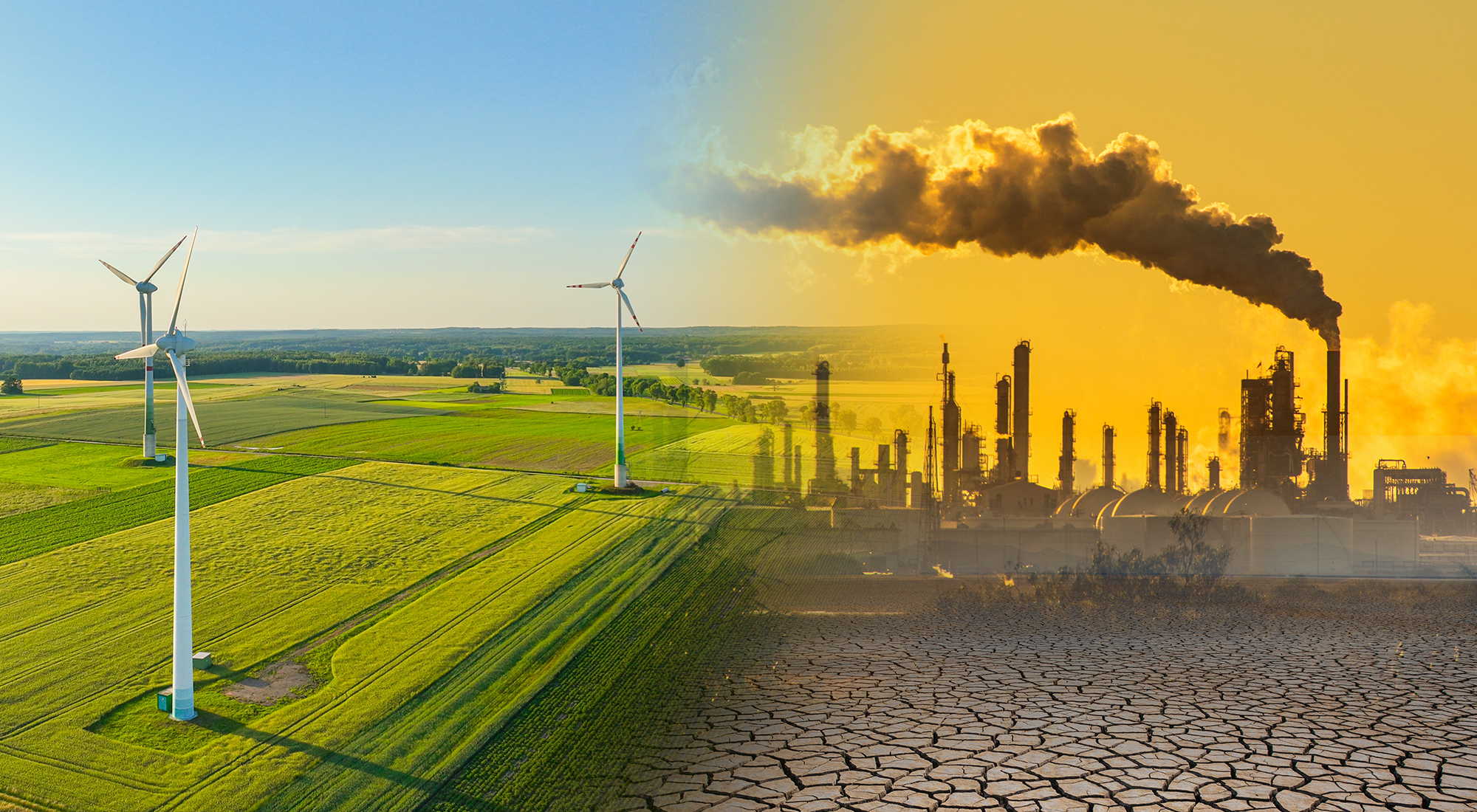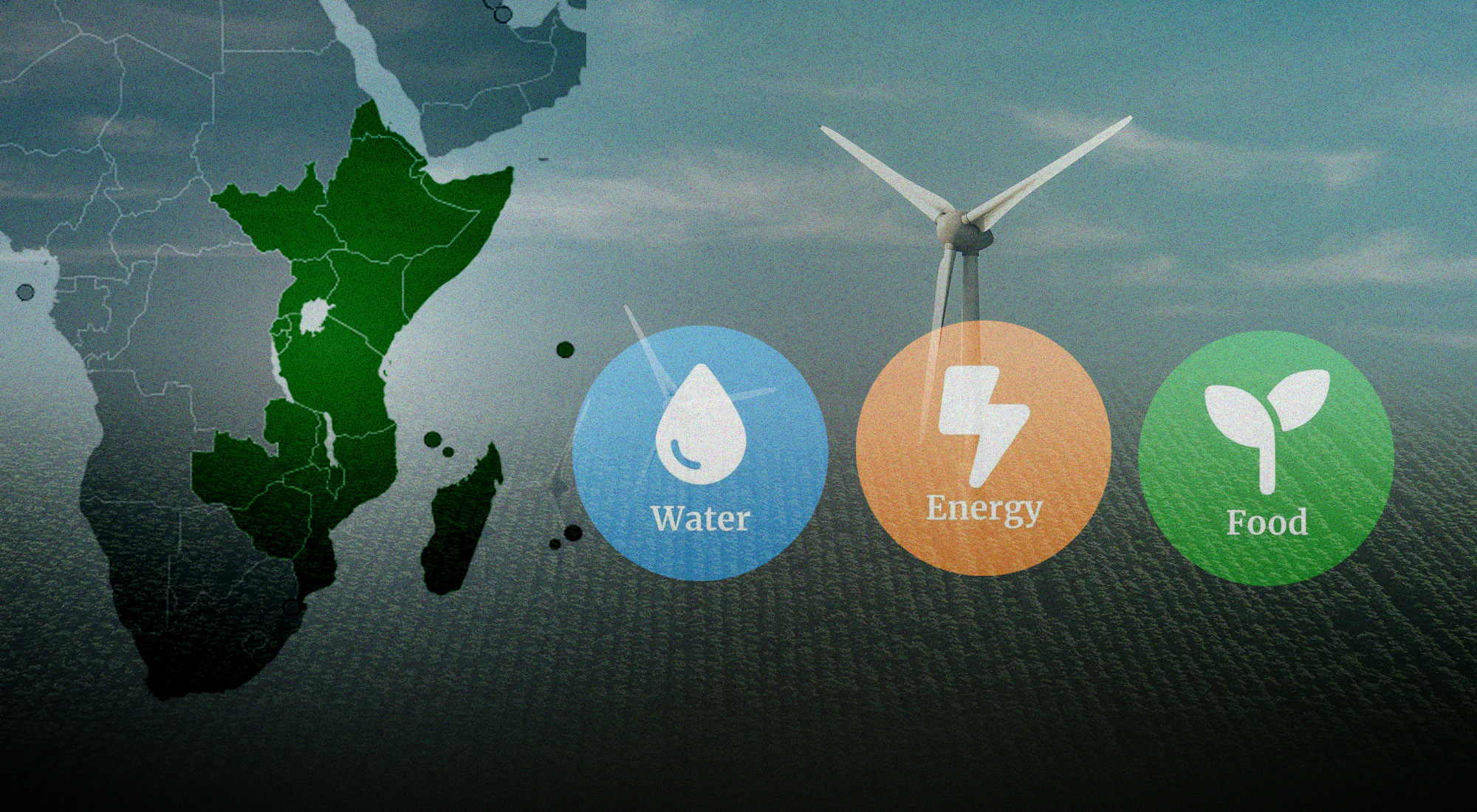An apparent acceleration over the past decade or so in the frequency and intensity of droughts, floods, wildfires, and other extreme weather events has focused the attention of policy and practitioner communities on understanding and responding to climate-driven threats to security. Since the beginning of 2022, extreme weather – largely attributable to the changing climate – has resulted in an increase in the frequency of “megafires” leading to the loss of more than 100,000 acres; severe flooding caused by record rains in Pakistan, Bangladesh, and Nigeria; and extreme food insecurity in Kenya, Ethiopia, and Somalia due to a worsening multi-year drought.
The involvement of military resources in responding to climate-related phenomena has intensified recently; troops were deployed this summer in more than ten European countries to assist in fighting fires, while flood emergencies in China, India, Iran, Pakistan, Uganda, and the United Arab Emirates, witnessed forces participating in and coordinating rescue efforts.[1] Furthermore, in relation to potential long-term scenarios, defense and security entities involved in policy planning have identified climate security threats as likely drivers of conflicts. U.S. policy interest in relation to climate security is mainly concerned with the risk of drought, starvation, disease, and migration causing regional conflicts, which could place extraterritorial demands on American military, economic, diplomatic and humanitarian resources.[2] Somewhat contrastingly, EU policy does not go so far as to consider potential armed interventions by member states as central to its climate security agenda,[3] preferring to focus policy attention on the threat climate change brings to the water-food-energy complex by impacting the availability of resources and health of ecosystems critical to the success of Europe’s New Green Deal.[4]
However, it is in the Middle East that the effects of climate change on security are likely to be felt most keenly, as rising heat, extended droughts, and accelerating desertification increasingly threaten agriculture, food production, and the health of communities. In her keynote speech delivered at the second TRENDS–Atlantic Council Conference on “Sustainable Security of the Middle East: Climate Change, Challenges, and Prospects,” held on September 28 and 29 in Washington, D.C., the UAE Minister of Climate Change and Environment emphasized that climate change is already worsening situations of displacement, resource competition, socioeconomic stress, and food and water insecurity.[5]
Forecasts of the future effects of climate change on the region provide a poor security, political and economic outlook. The Regional Initiative for the Assessment of Climate Change Impacts on Socio-Economic Vulnerability in the Arab Region (RICCAR) predicts that temperatures in the Mashreq will increase by up to 2.5°C by 2050.[6] Moreover, competition among states for scarce water resources leaves the MENA region at constant risk of political or military escalation, given that among the 17 most water-stressed states in the world (Qatar, Israel, Lebanon, Iran, Jordan, Libya, Kuwait, Saudi Arabia, Eritrea, the United Arab Emirates, San Marino, Bahrain, India, Pakistan, Turkmenistan, Oman, and Botswana), 12 are located in the Middle East.[7] In the longer term, shortages of water and food induced by the effects of climate change could promote political instability, conflict, and mass migration; the World Bank predicts that climate change could force over 200 million people across six world regions to move within their countries by 2050.[8]
Against this background, the “Sustainable Security of the Middle East: Climate Change, Challenges, and Prospects” conference was conceived as a forum through which scholars and practitioners could clarify the interfaces between climate security topics and the mainstream climate discourse, and develop policy recommendations to mitigate or adapt to the most pressing risks, which include:
- Lower output of food and agriculture systems due to temperature increases, soil degradation, and drought. The effect of drought on countries’ agricultural systems is almost immediate and many countries in the region currently lack the resilience to endure prolonged drought. Longer-term challenges of desertification and soil degradation remain.
- Increased public health burden due to impacts of climate change on heat-related mortality and cardiovascular disease, and as an aggravating factor in air pollution as well as unsafe water and sanitation.[9] Health care systems in many countries lack the resilience necessary to deal with increasing health burdens.
- Increased difficulty in ensuring water security due to less predictable water availability and climate-induced water scarcity. Additionally, extreme weather phenomena can result in the contamination of water supplies, increasing the risk of water-borne diseases including cholera and typhoid.
- Higher risk of migration and displacement of people due to climate-induced resource competition, deteriorating socio-economic conditions, and conflict. A joint report produced in 2021 by ESCWA, the IOM and UNHCR found that “environmental factors” such as climate change, drought, desertification and water stress are among the most prominent drivers of migration in the Arab Region.[10]
Focusing policy on adaptation and resilience
Whereas controlling global temperature increases through treaty-based reductions in greenhouse gas emissions is focused on the mitigation of climate risks, effectively responding to challenges at the nexus of climate and security depends on effective risk management and on the development of resilient systems, i.e., adaptation approaches. In other words, policy at the climate-security nexus currently needs to address the effects rather than the causes of climate change.
The importance of adaptive capacity is also evident when considering climate-induced migration: where populations’ adaptive capacity to climactic changes is high – for example, through greater reliance on air conditioning and access to water through large-scale desalination – migration directly attributable to climate change will likely be limited. Accordingly, directly correlating climate change with migration can be inaccurate, insofar as adaptive capacity has a profound effect on whether households migrate.[11] Adaptive and resilient systems are also critically important in the management of short-term shocks: recent disruptions to international supply chains caused by the Covid-19 pandemic and the Ukraine war have sensitized governments to the need for effective risk management of external supply shocks. As a result, several governments are focused on targeted investments aimed at increasing the resilience of food systems based on their experience that the cost of doing so will over time likely be lower than the cost of responding to emergency events.[12]
However, while the global community has progressed the overall climate agenda in terms of collective negotiations and goal setting, the dialogue on adaptation to threats at the nexus of climate and security remains largely outside the climate discourse. Additionally, the institutional capacity necessary to address climate risk and adaptation remains relatively insufficient in many countries in the region, particularly in comparison with the capabilities of U.S. and EU climate institutions.[13] Finally, adaptation finance is currently well below the scale and level necessary to implement effective adaptation to climate risk, and is provided mainly by public sectors. Despite growing awareness of the importance of adaptation as a means of blunting the physical threats of climate change, estimates show that only approximately 25% of annual adaptation spending is currently being met.[14]
In order to address these challenges, it will be necessary to engage internationally, regionally, and at the level of national policy and planning. Firstly, climate-security threats need to be integrated with the international climate change dialogue in order to commence the development of common resilience and adaptation frameworks, policies, and tools.[15] As part of the COP26 Health Program, for example, 50 countries (including Bahrain, Egypt, Iran, Jordan, Oman, Morocco, Pakistan, Palestine, Tunisia, UAE, and Yemen) committed to develop more resilient health systems and agreed to prepare national vulnerability and health adaptation plans, which will be integrated with national climate change adaptation plans. The World Health Organization (WHO) will advocate for more countries to join this initiative during the coming COP27 in Egypt and COP28 in the UAE.[16] This encouraging initiative will hopefully establish a model for collective action on a wider range of climate-security threats. Secondly, at a regional level – and in particular where resources are shared – it will be essential to ensure that adaptive management practices including diplomacy, technical exchange, and raising awareness are used to reduce tensions among countries. Thirdly, at the level of national planning, policy should focus on food security, water security, climate-resilient health systems, and resilience to climate-driven migration based on a robust and scientific understanding of the drivers behind these threats.
Increasing regional collaboration to address climate-security risks
While greenhouse gas emissions are inherently a global problem requiring a multilateral solution, i.e., the push towards achieving net-zero carbon emissions by 2050 under the core Paris Agreement goals, climate-security issues manifest with a more specific geographic focus. Assessments of current progress on this front are however pessimistic: the latest United Nations Environment Program (UNEP) Emissions Gap Report[17] released on 27 October 2022, projects large temperature increases of between 2.1–2.9°C this century unless drastic action is taken to cut carbon emissions and implement global “system-wide” changes.
Against this background, adapting Middle East water, food, and health systems to increasingly severe heat stresses assumes greater urgency. Cognizant of this reality, climate-driven vulnerabilities in food, water, and health systems were characterized by conference participants as urgent national problems requiring regionally-focused solutions. While these challenges are likely to disproportionately impact the Middle East, there is also an opportunity for regional leadership in scientific, institutional, policy, and technology fields in the development of adaptive responses to the threats at the climate-security nexus.
In his keynote remarks, David Livingston, the Senior Advisor to U.S. Special Presidential Envoy for Climate, emphasized the importance of responding to climate challenges through investing in agricultural sector innovation and technology, as exemplified by the recently launched Agriculture Innovation Mission for Climate (AIM for Climate) initiative involving the United States, the United Arab Emirates, and several other countries. Regarding intra-regional cooperation, he pointed to the nascent cooperation between the United Arab Emirates, Jordan, and Israel to enhance energy and water security – termed Project Prosperity – which is expected to bring tangible benefits this decade. Separately, participants emphasized that averting conflict escalation over shared water resources – for example, in relation to the Euphrates and Nile basins – depends on stable political cooperation enabling fair management of transboundary water resources.
Other participants commented on the necessity to expand regional cooperation beyond shared water resources to include other aspects of climate-security as well as the restoration of the Middle East ecosystem. To this end, recommendations put forward included: activating regional partnerships and initiatives aimed at increasing resilience to climate-security risks through joint investment in promising resilience-enhancing technologies; building the science–policy interface by promoting regional scholarship by researchers examining the climate-security nexus; and targeting capacity development and finance as levers through which climate security can become an integral part of national and regional security.
Synchronizing policy to achieve economy-wide impacts
Climate-related risks impact a broad range of areas across the economy, society, and environment. As a result, linkages between different threats can mean that addressing one challenge can increase the risk of another. For example, in a water-stressed region such as the Middle East, pursuing food self-sufficiency through increased agricultural production will also greatly increase the strain on limited water resources. Therefore, in order to build coherent policy and capture synergies across sectors when dealing with climate-security risks, it will be essential to mainstream policy addressing climate-security risks within national development planning.[18]
Moreover, given the need to achieve impact at scale across economies, governments and private sectors need to collaborate closely during both the policy development and execution phases of climate adaptation programs and projects. Climate accelerators are one promising avenue through which innovative and technology-intensive initiatives can be leveraged to provide economy-wide impacts. In her comments concerning public policy and accelerators, H.H. Sheikha Shamma bint Sultan bin Khalifa Al Nahyan characterized the relationship between the public and private sectors as one in which governments would incentivize the private sector through investment incentives and other means of facilitation, while conversely also holding them accountable for their commitments.[19]
Renewable energy, considered among the most mature industrial economic sectors that have emerged in response to climate change, also exemplifies the economy-wide impacts achievable through thoughtful and coordinated planning and policy. Zoheir Hamedi, a representative of the Abu Dhabi-based International Renewable Energy Agency (IRENA), observed that governments implementing coherent policy, regulatory and fiscal frameworks will not only establish credible renewable energy generation targets, but also lay the foundations for renewable energy investment and the growth of local manufacturing industries. In terms of encouraging the sustainable regional growth of the industry, he also emphasized the importance of standardizing renewable energy policies and regulations across Middle Eastern markets to attract large-scale industrial partnerships with international private sector companies.[20]
Finally, given its economy-wide impact and importance in developing resilience in the face of climate-security risks, the concept of the circular carbon economy – namely, expanding recycling, reuse, and recovery in the economy – requires policy-support and dedicated initiatives. In his characterization of how the circular carbon economy concept can drive important environmental technology solutions, Paul Jerome Sullivan, Non-Resident Senior Fellow at the Global Energy Center, Atlantic Council, observed that Gulf energy players – such as Aramco and the King Abdullah Petroleum Studies and Research Center (KAPSARC) – are developing high-technology industry solutions that will render energy value chains cleaner through carbon removal and reuse.[21]
Promoting sustainable high-technology investments and solutions
Another key cross-cutting theme discussed at length concerned leveraging high technology investments and innovation to achieve performance step changes, increased efficiency, and first mover advantage. The use of technology in ‘smart agriculture’ was put forward as one of the key examples of the use of technology to increase agricultural supply efficiency under conditions of water and land scarcity typical in the MENA region.
Other participants noted that achieving environmental security in the MENA region means successfully sustaining efforts over a timeframe of many decades; the economic and financial sustainability of initiatives is therefore of critical importance. At a policy level, the long-term financial sustainability of investments can be encouraged through supporting entrepreneurial activities (including those of smaller companies and small-scale agricultural producers) in key climate-risk areas; commercializing promising technologies addressing climate-security nexus issues at scale; and promoting research to achieve technological or innovation breakthroughs.
However, practical limitations also exist with regard to private financing, insofar as local banks may lack the capacity to understand complex financing arrangements required for large-scale renewable energy projects. Accordingly, as observed by Syed Adeel Abbas, Regional Coordinator for Climate Change at the World Bank, capacity building aimed at enhancing the project facilitation skills of local banks will enable broader support for climate-related projects from the domestic banking industry.[22]
In terms of public funding, should resource-challenged regional governments hesitate to adequately invest in key adaptation projects, it may be necessary to categorize dealing with climate risks across food, energy and water sectors as national security concerns so that they receive priority funding under the broader security umbrella.[23]
Social and individual responsibility for climate action in the region
The final cross-cutting theme concerns the need to increase social and individual responsibility for climate action among individuals from the region.[24] According to a survey conducted by the Barometer Department at Trends Research and Advisory on public perceptions of climate change, Middle Easterners exaggerate the role of governments in responding to the climate crisis and underestimate the responsibility of individuals: 60.7% of Middle Eastern respondents believed the government was responsible for combating climate change compared to a 30.5% world average.[25] Given the importance of promoting climate-friendly behaviors to reduce energy consumption, increase recycling, and support conservation, the sense of individual responsibility for climate action needs to increase.
To this end, participants discussed various strategies based on informing and educating the wider public about the general risks of climate change, as well as topics at the climate-security nexus. Targeted media campaigns and lectures would serve to generally strengthen public engagement and awareness of climate-related issues, as would raising awareness of the threat that environmental deterioration poses to human life in the region. In terms of education policy, it was proposed that environmental and sustainable development concepts be integrated into school curricula. Finally, in order to generate academic knowledge based on regional expertise, scientific research on climate change and climate-security topics should be promoted regionally.
As an emerging field, it is perhaps unsurprising that global environmental treaties lack solutions for addressing and solving challenges occurring at the climate-security nexus.[26] However, COP27 in Egypt and the successive COP28 in the United Arab Emirates present an opportunity to develop collective understanding of climate-security risks and formalize agreement as to the most effective solutions in preventing climate-security risks from becoming drivers of instability and conflicts.
Given the disproportionate impact of climate-security threats on the region, the relevance of the Middle East extends beyond coordinating and supporting treaty-based collective action to include a leading role in the implementation of practical adaptation and resilience strategies. The growing maturity of the scientific, institutional, and technology capabilities of many regional states coupled with deep expertise of security policy makes for an ideal combination in leading efforts to tackle emerging global threats at the climate-security nexus.
References
[1] Erin Sikorsky, “The World’s Militaries Aren’t Ready for Climate Change,” Foreign Policy, September 22, 2022, https://foreignpolicy.com/2022/09/22/militaries-climate-change-security-threats-strategy-floods-fires/?tpcc=recirc_latest062921.
[2] U.S. National Intelligence Council, National Intelligence Estimate: Climate Change and International Responses Increasing Challenges to US National Security Through 2040, October 21, 2021, https://www.dni.gov/files/ODNI/documents/assessments/NIE_Climate_Change_and_National_Security.pdf.
[3] Olivia Lazard and Richard Youngs, “The EU and Climate Security: Toward Ecological Diplomacy,” Carnegie Europe, July 12, 2021, https://carnegieeurope.eu/2021/07/12/eu-and-climate-security-toward-ecological-diplomacy-pub-84873
[4] European Commission, “Understanding the Climate-Water-Energy-Food Nexus and Streamlining Water-related Policies,” Directorate-General for Research and Innovation, March 19, 2021, http://bitly.ws/w8J2.
[5] H.E. Mariam bint Mohammed Almheiri, UAE Minister of Climate Change and Environment, Keynote Remarks delivered at the TRENDS–Atlantic Council 2nd Annual Conference, Washington D.C., September 28-29, 2022.
[6] Carol Chouchani Cherfane, Director of the Arab Centre for Climate Change Policies, “The Correlation of Extreme Environmental Events and Increased Migration Flows,” Presentation delivered at the TRENDS–Atlantic Council 2nd Annual Conference, Washington D.C., September 28-29, 2022.
[7] World Resources Institute, Aqueduct Country Rankings: https://wri.org/aqueduct.
[8] The World Bank, “Climate Change Could Force 216 Million People to Migrate Within Their Own Countries by 2050,” September 13, 2021, https://www.worldbank.org/en/news/press-release/2021/09/13/climate-change-could-force-216-million-people-to-migrate-within-their-own-countries-by-2050.
[9] Mazen Malkawi, Regional Advisor at WHO Centre for Environmental Health Action (CEHA), “Environmental Changes and Global Warming Effects on Public Health,” Presentation delivered at the TRENDS–Atlantic Council 2nd Annual Conference, Washington D.C., September 28-29, 2022.
[10] United Nations, Situation Report on International Migration 2021: Building Forward Better for Migrants and Refugees in the Arab Region (Beirut: ESCWA, 2022), https://mena.iom.int/sites/g/files/tmzbdl686/files/documents/srim-2021-english-june-30.pdf.
[11] Cherfane, “The Correlation of Extreme Environmental Events and Increased Migration Flows.”
[12] Svetlana Edmeades, Lead Agricultural Economist at the World Bank, “Regional Food Security Strategies and Impacts of the War in Ukraine on Major MENA Agricultural Imports,” Presentation delivered at the TRENDS–Atlantic Council 2nd Annual Conference, Washington D.C., September 28-29, 2022.
[13] Madhuri and Rajeev Kumar, “Linkages Between Climate Change Adaptation and Development,” in Industry, Innovation and Infrastructure: Encyclopedia of the UN Sustainable Development Goals, eds. Walter Leal Filho, Anabela Marisa Azul, Luciana Brandli et. al. (Cham: Springer, 2021), https://doi.org/10.1007/978-3-319-95873-6_69.
[14] Barbara Buchner, Baysa Naran, Pedro de Aragão Fernandes et. al., “Global Landscape of Climate Finance 2021,” Climate Policy Initiative, December 14, 2021, https://www.climatepolicyinitiative.org/publication/global-landscape-of-climate-finance-2021/.
[15] Aisha Al Sarihi, Research Fellow at the National University of Singapore, “Ways in Which Climate Change Manifests in the Middle East and Its Impacts on the Stability of the Region,” Presentation delivered at the TRENDS–Atlantic Council 2nd Annual Conference, Washington D.C., September 28-29, 2022.
[16] Malkawi, “Environmental Changes and Global Warming Effects on Public Health.”
[17] United Nations Environment Program (UNEP), Emissions Gap Report 2022: The Closing Window – Climate Crisis Calls for Rapid Transformation of Societies (Nairobi: UNEP, 2022), https://www.unep.org/resources/emissions-gap-report-2022.
[18] Al Sarihi, “Ways in Which Climate Change Manifests in the Middle East and Its Impacts on the Stability of the Region.”
[19] H.H. Sheikha Shamma bint Sultan bin Khalifa Al Nahyan, Executive Director of UAE Independent Climate Change Accelerators, “Climate Diplomacy As a Growing Foreign Policy Challenge – COP28,” Presentation delivered at the TRENDS–Atlantic Council 2nd Annual Conference, Washington D.C., September 28-29, 2022.
[20] Zoheir Hamedi, Regional Programme Officer at IRENA, “The Role of Industrial Partnerships in Moving Towards Secure, Low-carbon Energy Systems,” Presentation delivered at the TRENDS–Atlantic Council 2nd Annual Conference, Washington D.C., September 28-29, 2022.
[21] Paul Jerome Sullivan, Lecturer at Johns Hopkins University and Non-Resident Senior Fellow at the Global Energy Center of the Atlantic Council, “Climate Change As a Geopolitical Challenge: Adaptation and Resilient Development,” Presentation delivered at the TRENDS–Atlantic Council 2nd Annual Conference, Washington D.C., September 28-29, 2022.
[22] Syed Adeel Abbas, Regional Coordinator for Climate Change at the World Bank, “Challenges to Energy Transition in the Middle East and North Africa,” Presentation delivered at the TRENDS–Atlantic Council 2nd Annual Conference, Washington D.C., September 28-29, 2022.
[23] Alya Al Awadhi, Economic Affairs Researcher and Head of Consulting at TRENDS Research and Advisory, “The Economic Aspects of Sustainable Environmental Security and the Required Investments to Achieve Environmental Security,” Presentation delivered at the TRENDS–Atlantic Council 2nd Annual Conference, Washington D.C., September 28-29, 2022.
[24] H.H. Sheikh Nahyan bin Mabarak Al Nahyan, UAE Minister of Tolerance and Coexistence, Opening Remarks delivered at the TRENDS–Atlantic Council 2nd Annual Conference, Washington D.C., September 28-29, 2022.
[25] Al Awadhi, “The Economic Aspects of Sustainable Environmental Security and the Required Investments to Achieve Environmental Security.”
[26] Al Sarihi, “Ways in Which Climate Change Manifests in the Middle East and Its Impacts on the Stability of the Region.”








